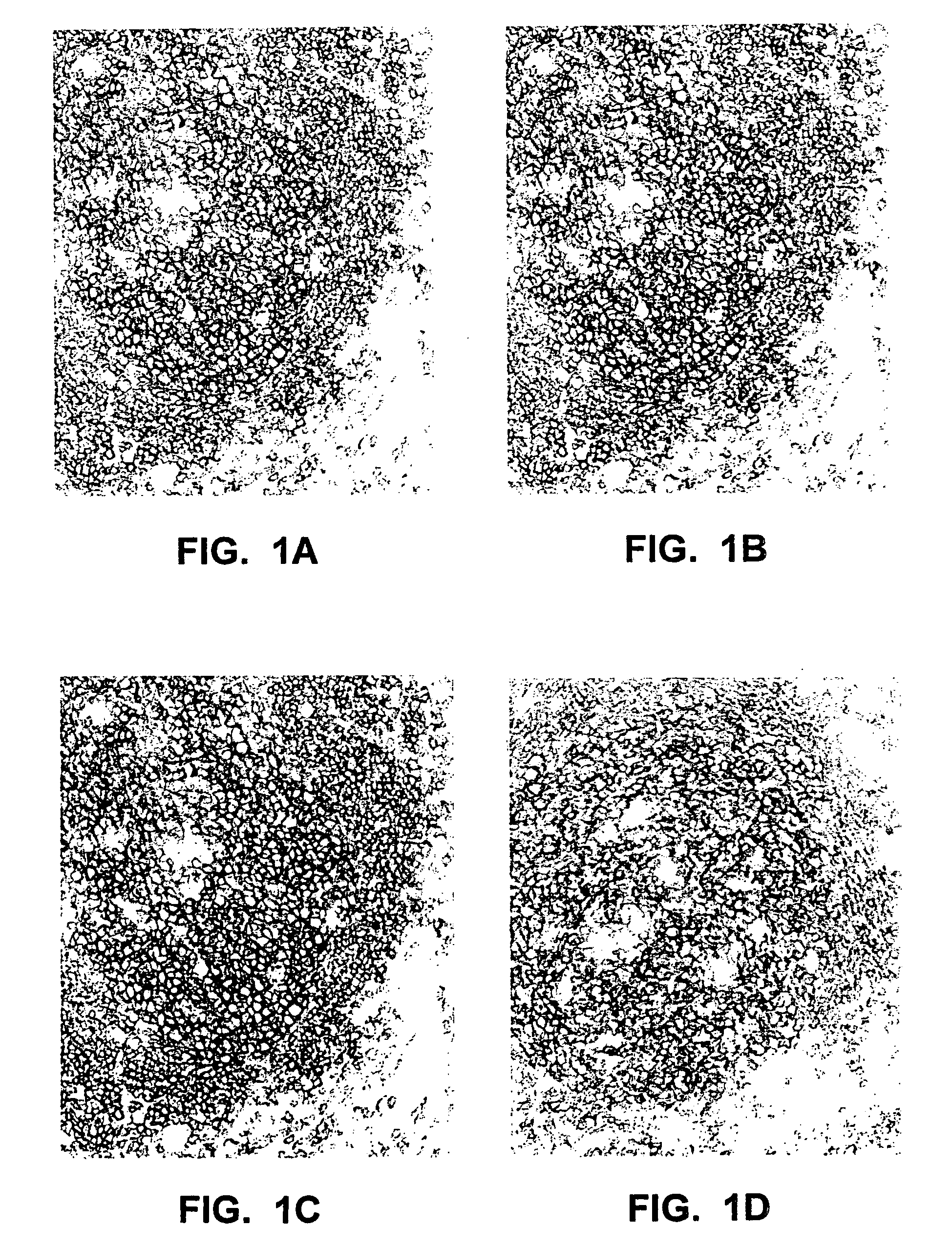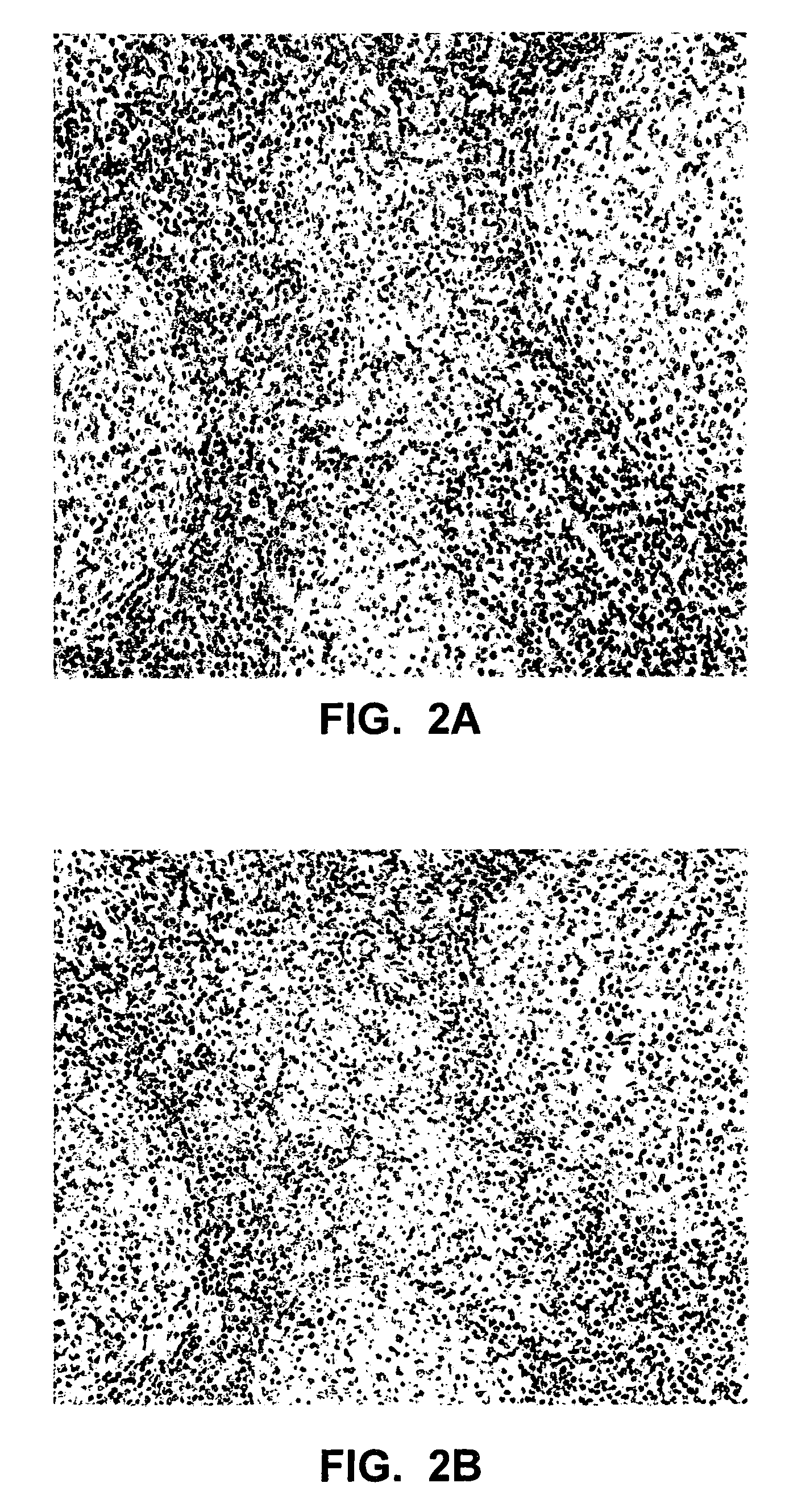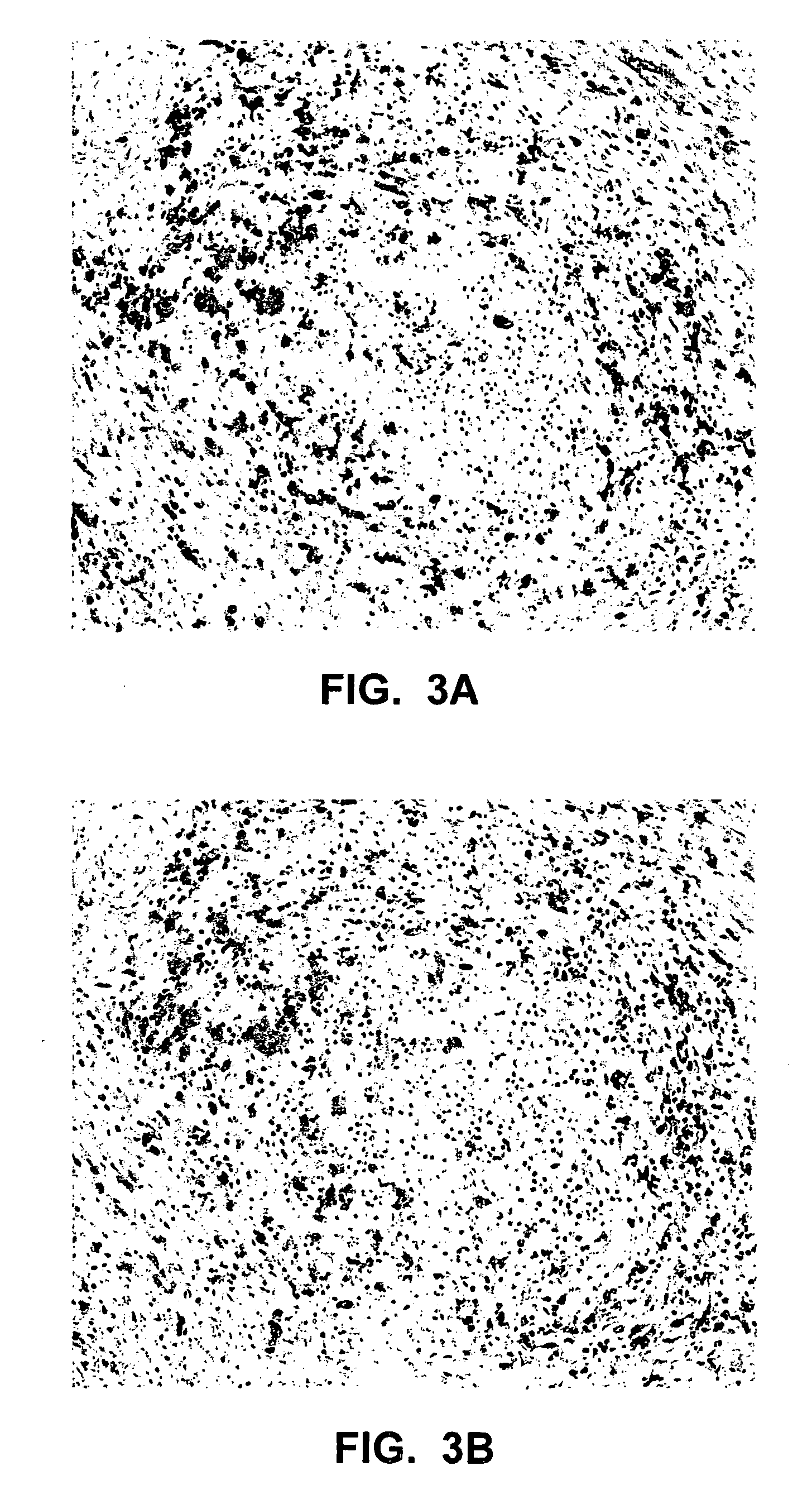Antibody conjugates
a technology of conjugates and antibodies, applied in the field of antibodies conjugates, can solve the problems of inactivation of either or both antibodies and enzymes, methods that do not address loss of adverse steric effects, etc., and achieves the effects of high antibody specificity and enzyme activity, enhanced detection performance, and intense staining
- Summary
- Abstract
- Description
- Claims
- Application Information
AI Technical Summary
Benefits of technology
Problems solved by technology
Method used
Image
Examples
Embodiment Construction
[0043] Further aspects of the invention are illustrated by the following non-limiting examples, which proceed with respect to the abbreviations and terms defined below.
[0044] I. Abbreviations [0045] 2-ME—2-mercaptoethanol [0046] 2-MEA—2-mercaptoethylamine [0047] Ab—antibody [0048] ALP—alkaline phosphatase [0049] BSA—bovine serum albumin [0050] DTE—dithioerythritol(cis-2,3-dihydroxy-1,4-dithiolbutane) [0051] DTT—dithiothreitol(trans-2,3-dihydroxy-1,4-dithiolbutane) [0052] EGFR—epidermal growth factor receptor [0053] ER—estrogen receptor [0054] HRP—horseradish peroxidase [0055] IHC—immunohistochemistry [0056] ISH—in situ hybridization [0057] MAL—maleimide [0058] NHS—N-hydroxy-succinimide [0059] PEG—polyethylene glycol [0060] PR—progesterone receptor [0061] SAMSA—S-Acetylmercaptosuccinic acid [0062] SATA—N-succinimidyl S-acetylthioacetate [0063] SATP—Succinimidyl acetyl-thiopropionate [0064] SM—signal-generating moiety [0065] SMPT—Succinimidyloxycarbonyl-α-methyl-α-(2-pyridyldithio)to...
PUM
| Property | Measurement | Unit |
|---|---|---|
| Molar density | aaaaa | aaaaa |
| Molar density | aaaaa | aaaaa |
| Concentration | aaaaa | aaaaa |
Abstract
Description
Claims
Application Information
 Login to View More
Login to View More - R&D
- Intellectual Property
- Life Sciences
- Materials
- Tech Scout
- Unparalleled Data Quality
- Higher Quality Content
- 60% Fewer Hallucinations
Browse by: Latest US Patents, China's latest patents, Technical Efficacy Thesaurus, Application Domain, Technology Topic, Popular Technical Reports.
© 2025 PatSnap. All rights reserved.Legal|Privacy policy|Modern Slavery Act Transparency Statement|Sitemap|About US| Contact US: help@patsnap.com



